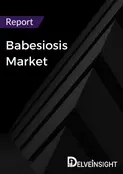The contemporary healthcare ecosystem has witnessed remarkable transformation, particularly within critical care medicine. Extracorporeal membrane oxygenation (ECMO) technology stands as one of the most significant medical breakthroughs, providing essential life support for patients experiencing severe cardiac and pulmonary failure. The accelerating adoption of ECMO therapy, driven by global health emergencies, increasing cardiovascular disease prevalence, and technological innovation, has propelled substantial growth in the Extracorporeal Membrane Oxygenation Devices Market.
ECMO represents an advanced therapeutic intervention that temporarily replaces heart and lung functions for critically ill patients. This sophisticated system extracts blood from the patient's circulatory system, processes it through an artificial lung membrane that oxygenates blood while removing carbon dioxide, then returns the treated blood to the patient's body. Medical professionals deploy ECMO when conventional treatments including mechanical ventilation and pharmaceutical interventions prove inadequate for maintaining proper oxygenation or circulation.
The technology encompasses three primary configurations: Veno-venous (VV) ECMO for respiratory support, Veno-arterial (VA) ECMO for combined cardiac and respiratory assistance, and Arterio-venous (AV) ECMO for specialized applications. These systems serve diverse patient populations across neonatal, pediatric, and adult demographics facing conditions such as acute respiratory distress syndrome, cardiogenic shock, and complex post-surgical recovery scenarios.
According to comprehensive market research, the Extracorporeal Membrane Oxygenation Devices Market Size has experienced exponential growth throughout the past decade. This expansion stems from multiple factors including rising cardiovascular disease burden, aging population demographics, expanded surgical applications, and broadened therapeutic indications.
The COVID-19 pandemic significantly accelerated market demand as healthcare systems globally recognized ECMO's critical role in treating severe respiratory complications. This recognition transformed ECMO from a specialized intervention to an essential component of pandemic preparedness strategies, fundamentally altering market dynamics and clinical acceptance.
Several key drivers fuel continued market expansion. The increasing prevalence of cardiopulmonary diseases creates sustained demand for advanced life support technologies. Technological advancements have produced more efficient, compact, and user-friendly ECMO systems featuring enhanced monitoring capabilities, automated controls, and improved portability. These innovations enable broader clinical applications and facilitate deployment in previously challenging environments.
Expanding clinical indications represent another significant growth catalyst. Beyond traditional applications, ECMO now supports trauma patients, serves as a bridge to organ transplantation, and enables extracorporeal cardiopulmonary resuscitation procedures. This therapeutic versatility increases patient eligibility and market opportunities.
Healthcare infrastructure development, particularly in emerging economies, enhances ECMO accessibility. Improved ICU capacities, enhanced clinician training programs, and supportive government policies facilitate broader technology adoption across diverse healthcare settings.
Despite positive growth trajectories, market challenges persist. High implementation costs and resource requirements limit ECMO accessibility primarily to specialized tertiary care centers. The technology demands skilled personnel, continuous monitoring, and dedicated infrastructure, creating barriers for widespread adoption in resource-limited environments.
Clinical complications including bleeding, thrombosis, and infection risks necessitate specialized management expertise. Limited availability of trained perfusionists and critical care specialists constrains market expansion, particularly in developing regions. Regulatory complexities and reimbursement uncertainties further complicate market dynamics across different geographical regions.
The competitive landscape features several prominent Extracorporeal Membrane Oxygenation Devices Companies including Medtronic, Getinge AB, LivaNova PLC, Abbott, and Terumo Corporation. These industry leaders invest heavily in research and development, focusing on technological innovation, strategic partnerships, and geographic expansion to strengthen market positions.
Regional analysis reveals North America's market leadership, driven by advanced healthcare infrastructure and favorable reimbursement policies. Europe follows closely with strong government support for critical care programs. The Asia-Pacific region demonstrates the highest growth potential due to increasing healthcare investments and rising disease burden in populous nations.
Looking forward, the Extracorporeal Membrane Oxygenation Devices Market Forecast indicates sustained expansion through 2030. Market growth will depend on continued technological innovation, expanded clinical applications, improved cost-effectiveness, and enhanced healthcare professional training programs.
The ECMO technology market represents a critical segment within the global medical device industry, poised for continued growth as healthcare systems recognize its life-saving potential and technological capabilities continue advancing.
Latest Reports Offered by Delveinsight:
Anti-Neutrophil Cytoplasmic Antibody-Associated Vasculitis Market | Carcinoid Syndrome Market | Catheter Stabilization Devices Market | Chronic Smell And Flavor Loss Market | Clostridium Difficile Infections Market | Convulsive Seizures Market | Diabetic Gastroparesis Market | Endoscopic Ultrasound Market | Graves Disease Market | Hereditary Deafness Medical Device Market | Hypophosphatasia Market | Immune Thrombocytopenia Market | Impetigo Market | Intraocular Lymphoma Market | Langerhans Cell Histiocytosis Market | Liver Fibrosis Market | Mantle Cell Lymphoma Market | Metastatic Merkel Cell Carcinoma Market | Myotonic Dystrophy Market | Niemann Pick Disease Type C Market | Nonmuscle Invasive Bladder Cancer Market | Overactive Bladder Syndrome Market | Peanut Allergy Market | Pediatric Growth Hormone Deficiency Market | Pediatric Neuroblastoma Market | Pelizaeus-Merzbacher Disease Market | Peritoneal Carcinomatosis Market | Persistent Epithelial Defects Market | Pork Tapeworm Infection Market | Primary Hyperoxaluria Market |
Latest Reports:
https://www.delveinsight.com/sample-request/hypercalcemia-epidemiology-forecast
https://www.delveinsight.com/sample-request/kaposis-sarcoma-epidemiology-forecast
https://www.delveinsight.com/sample-request/facial-lines-market
https://www.delveinsight.com/sample-request/asc22-market-size-forecast-and-emerging-insight
https://www.delveinsight.com/sample-request/axillary-hyperhidrosis-market
https://www.delveinsight.com/sample-request/hepatitis-d-market
https://www.delveinsight.com/sample-request/operating-room-equipment-market
About DelveInsight
DelveInsight is a trusted provider of life sciences and pharmaceutical market research and consulting, offering actionable insights that empower organizations to make informed decisions. With a commitment to delivering strategic intelligence, DelveInsight serves as a key partner to global pharmaceutical, biotechnology, and healthcare companies looking to excel in an evolving market landscape.
Contact Us
Kanishk
Email: kkumar@delveinsight.com
.png)

-converted-from-webp.png)


